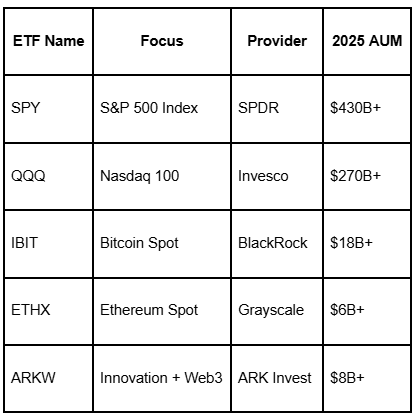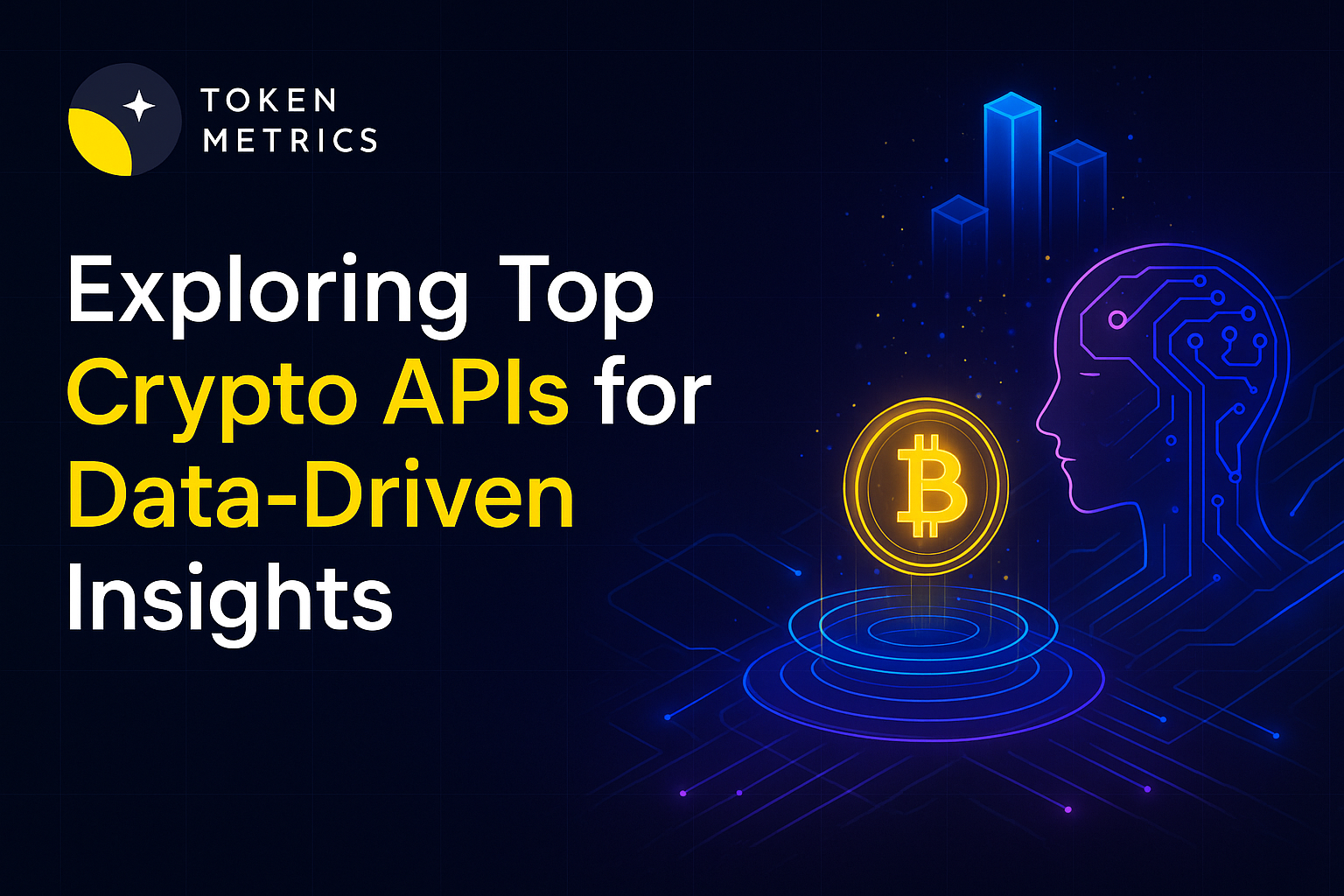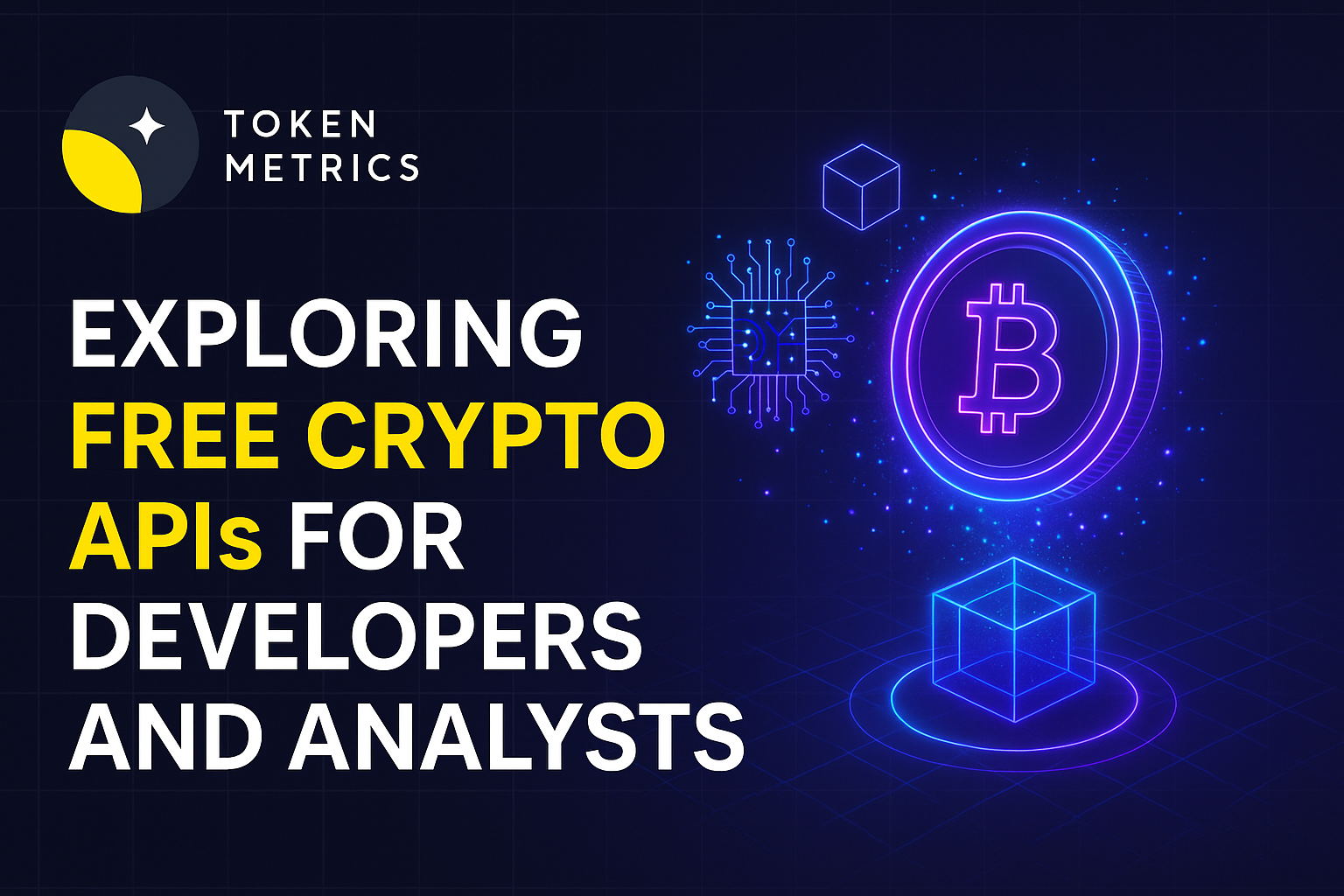
What Is an ETF Fund? A Beginner’s Guide to Exchange-Traded Funds in 2025
.png)
ETF funds, or Exchange-Traded Funds, have revolutionized investing for both retail and institutional investors. In 2025, ETF funds are more popular than ever—offering a simple, low-cost, and diversified way to invest in everything from tech stocks to cryptocurrencies. But what exactly is an ETF fund, and why is it such a powerful investment tool?
In this article, we’ll explain:
- What is an ETF fund?
- How ETF funds work
- Types of ETFs (including crypto ETFs)
- Key benefits and risks
- How Token Metrics, an AI-powered platform, helps you make better ETF investment decisions
Let’s dive in.
📌 What Is an ETF Fund?
An ETF fund (Exchange-Traded Fund) is a type of investment fund that holds a basket of securities—such as stocks, bonds, commodities, or cryptocurrencies—and is traded on a stock exchange, just like individual stocks.
When you buy a share of an ETF fund, you are buying partial ownership of that entire portfolio of assets. This gives you instant diversification without having to purchase each asset individually.
For example, an ETF fund that tracks the S&P 500 allows you to invest in 500 of the largest U.S. companies with just one purchase.
🔍 How Does an ETF Fund Work?
ETF funds are created by financial institutions called fund sponsors (like BlackRock, Fidelity, or Vanguard). These sponsors select and manage a portfolio of underlying assets and list the ETF shares on stock exchanges.
Here's how it works:
- Creation – The sponsor assembles a portfolio and forms an ETF.
- Listing – Shares of the ETF are listed and traded on exchanges like NYSE or Nasdaq.
- Buying/Selling – Investors buy and sell ETF shares throughout the day at market prices.
- Price Movement – The price of an ETF share fluctuates based on the value of its underlying assets and market demand.
ETF prices are influenced by a combination of Net Asset Value (NAV) and real-time market supply/demand.
🧩 Types of ETF Funds
In 2025, investors have access to a wide variety of ETF funds based on asset classes, strategies, and markets.
1. Stock ETFs
Track specific sectors (e.g., tech, healthcare), regions (e.g., U.S., Europe), or indices (e.g., S&P 500, NASDAQ-100).
2. Bond ETFs
Provide exposure to government, municipal, or corporate bonds with varying durations and yields.
3. Commodity ETFs
Track physical commodities like gold, silver, oil, or agricultural products.
4. Thematic ETFs
Focus on emerging trends or industries like artificial intelligence, clean energy, space exploration, or blockchain.
5. Crypto ETFs (New in 2025)
Give exposure to digital assets such as Bitcoin, Ethereum, and DeFi tokens—without requiring direct crypto ownership.
💥 What Are Crypto ETF Funds?
In 2025, crypto ETF funds are among the fastest-growing segments in the market. They offer secure, regulated access to cryptocurrencies via traditional brokerages.
Crypto ETFs include:
- Spot ETFs: Hold actual crypto assets like Bitcoin or Ethereum.
- Futures ETFs: Track prices of crypto futures contracts.
- Basket ETFs: Combine multiple crypto assets or themes, like DeFi or Web3.
These ETFs have made it easier for both institutions and retail investors to gain exposure to crypto without managing wallets, keys, or exchanges.
✅ Benefits of Investing in ETF Funds
ETF funds offer several advantages for investors in 2025:
1. Diversification
With just one purchase, you gain exposure to a broad portfolio of assets—reducing risk.
2. Liquidity
ETFs trade on exchanges all day, allowing you to buy or sell quickly at market prices.
3. Low Cost
Most ETFs have expense ratios under 0.20%, much lower than actively managed mutual funds.
4. Transparency
Most ETF funds disclose their holdings daily, so you always know what you’re investing in.
5. Tax Efficiency
Due to their structure, ETFs are generally more tax-efficient than mutual funds.
⚠️ Risks of ETF Funds
Like all investments, ETF funds come with risks:
1. Market Risk
If the market or sector an ETF tracks declines, your investment will also lose value.
2. Liquidity Risk
Some ETFs, especially niche or low-volume ones, can have wider spreads and lower liquidity.
3. Tracking Error
An ETF may not perfectly track the performance of its underlying index due to fees, slippage, or poor replication.
4. Over-Concentration
Some thematic ETFs may be overly concentrated in a few assets, increasing volatility.
🤖 How Token Metrics Enhances ETF Investing with AI
Token Metrics is an AI-powered crypto analytics and trading platform that helps investors research, evaluate, and make smarter decisions—including with crypto ETFs.
Here’s how Token Metrics helps you get ahead:
🔎 1. AI-Powered Ratings
Token Metrics uses advanced AI models to assign Investor Grades and Trader Grades to crypto assets, helping you identify the strongest performers—often held by top ETFs.

📊 2. Predictive Price Forecasts
Get forward-looking price predictions on Bitcoin, Ethereum, and other assets held in ETFs—so you can assess whether an ETF is likely to appreciate.

📈 3. On-Chain + ETF Inflow Analysis
Token Metrics tracks real-time ETF inflows, exchange reserves, and on-chain data, giving you insight into supply-demand dynamics that move prices.

🔔 4. Smart Alerts
Set alerts for key changes in asset ratings, prices, or bullish/bearish signals to stay informed on ETF-related opportunities.

By combining ETF investing with Token Metrics insights, you position yourself ahead of market trends and optimize your portfolio performance.
📈 Popular ETF Funds in 2025
Here are some high-performing ETF funds in traditional and crypto markets:

🧠 Final Thoughts
ETF funds are one of the most efficient and flexible ways to build a diversified investment portfolio in 2025. Whether you're targeting long-term growth, passive income, or exposure to emerging markets like crypto—ETF funds offer a secure, low-cost, and easy-to-use investment solution.
And with the rise of crypto ETF funds, platforms like Token Metrics are critical in helping investors evaluate opportunities, manage risk, and time the market using AI.
Whether you're a seasoned investor or just getting started, combining ETF investing with AI-powered insights gives you the edge in today's rapidly evolving financial landscape.

.svg)

Create Your Free Token Metrics Account

.png)




%201.svg)
%201.svg)


%201.svg)









.svg)




.png)